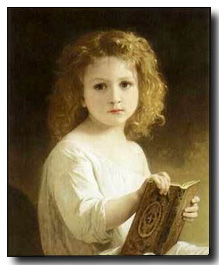Chastity is Becoming Fashionable
- ZENIT
A large number of teen entertainment and sports stars have taken a surprising stance: they plan to remain virgins until marriage.
 |
Today their children state with simplicity that it is beautiful to wait until one finds the person of ones life.
Us Magazine published a list of young stars who have chosen chastity until marriage. Among those who are proud to make this announcement are basketball star A.C. Green, one of the Los Angeles Lakers key players; young Russian tennis player Leelee Sobieski, 17, star of the mini-series Joan of Arc; and Jonathan Jackson, also 17, who plays Lucky in the serial General Hospital.
Enrique, a singer and son of mythical Julio Iglesias, has added his name to the list, as he wants to spare his children the experience of the maternal and paternal abandonment he suffered. With record sales throughout the world, Enriques announcement was perhaps the greatest surprise. Although he is the star in promotional videos that are markedly erotic in character, he said: I am a virgin and I want to remain like this until marriage, and when you mention it, please dont joke.
While this movement is still small, chastity clubs are growing. The movement started in the heart of a Baptist Church in Nashville, Tennessee in 1993, when Reverend Richard Ross presided the first promise of chastity. Just a few weeks later, dozens of Baptist and Pentecostal churches, as well as schools and neighborhood communities, adhered to the idea and thousands of boys did the same. Catholic circles, of course, embraced the idea as well. In a matter of months, groups like Best Friends, Choose, Girls, S.A., and Next Generation came into being. The first to defend the idea were young girls.
In truth, these youths have not discovered anything. Virginity has always been a Christian value, a novelty in the beginning that is being experienced in its recovery. The society in which Jesus Christ lived was of Jewish culture, which valued fertility above all and considered the death of a virgin woman a disgrace. Romans appreciated the temporal virginity of vestal virgins, the priestesses of Vestas temple, who abstained from sexual relations while serving the goddess. In the late Hellenic period, virginity was recognized as a value by women who were dedicated to religion and study.
But the Christian novelty, which calls for celibacy as a way of life, surprised the disciples themselves, who regarded it as very hard and expressed this to Jesus himself. In the early centuries of Christianity, when priests in general were married, consecrated virginity among women was very much appreciated in the new religion, and there were cases of virgins of great social prestige; illustrious women who cultivated letters and philosophical discussions. The life of Tecla, a famous virgin at the time of St. Paul, has come down to our days in multiple literary testimonials.
The Catechism of the Catholic Church defines chastity as the successful integration of sexuality within the person and thus the inner unity of man in his bodily and spiritual being. Before marriage, chastity is lived in abstinence from sexual activity. Within marriage, the virtue of chastity is lived by living out the matrimonial vow of fidelity.
In truth, this youthful proclamation of abstention has a prophetic character: the affirmation of the person beyond a determined function or use; the reaction to a period of trivializing the sexual experience; and the rejection of early relations that, for lack of foresight or information, end in unwanted adolescent pregnancies or in disgust with the exacerbation of corporeal pleasure. ZE00022102
 This is Meaghen Gonzalez, Editor of CERC. I hope you appreciated this piece. We curate these articles especially for believers like you.
This is Meaghen Gonzalez, Editor of CERC. I hope you appreciated this piece. We curate these articles especially for believers like you.
Please show your appreciation by making a $3 donation. CERC is entirely reader supported.

Acknowledgement
ZENIT is an International News Agency based in Rome whose mission is to provide objective and professional coverage of events, documents and issues emanating from or concerning the Catholic Church for a worldwide audience, especially the media.




